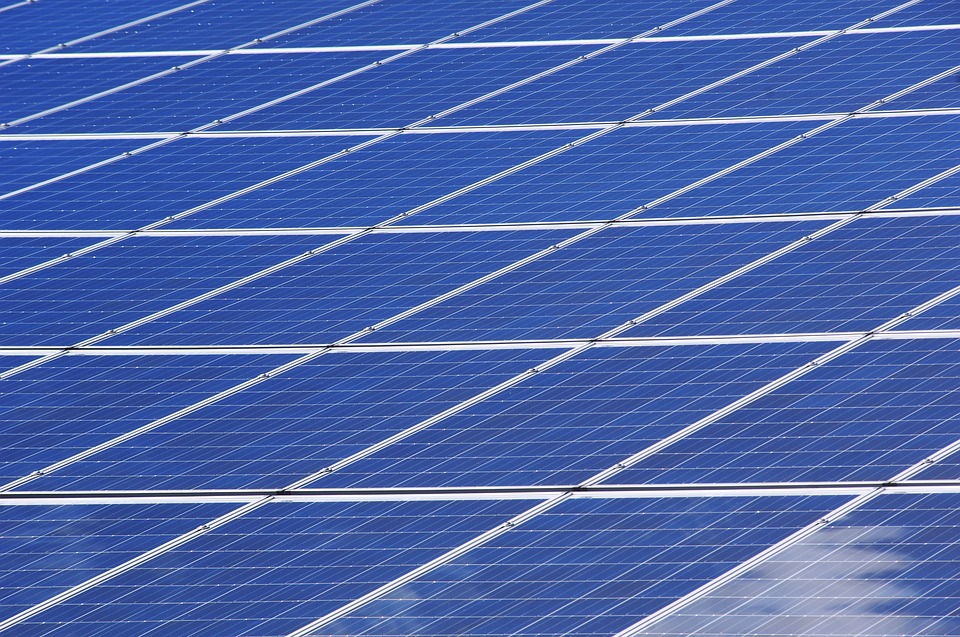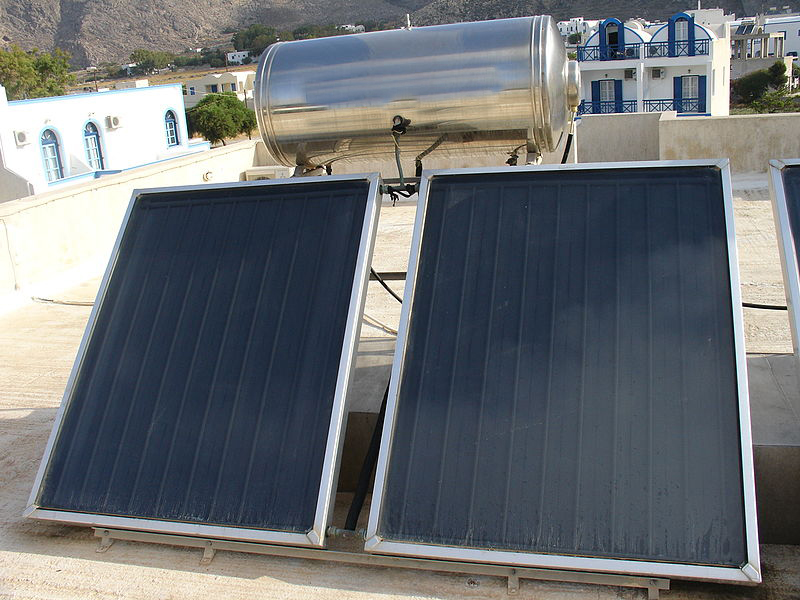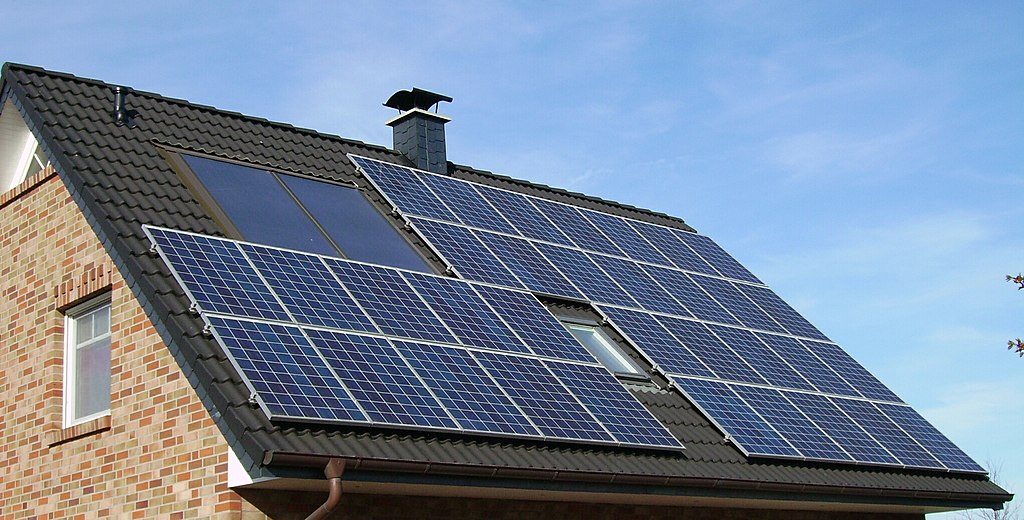Summary
– The photovoltaic effect
– Principle of the different photovoltaic modules
– Photovoltaic solar panel: a system that is easy to integrate into the home
– Advantages of the solar thermal panel
– The different solar thermal collectors
– Thermal solar panels: easy to integrate into your home
There are two types of solar panels. A photovoltaic panel offers you the autonomy of free electricity production. And the other, a thermal panel allows you to produce your domestic hot water, and to heat your home.
The photovoltaic effect
The photovoltaic effect was discovered in 1839 by Alexandre-Edmond Becquerel. The photovoltaic effect is the ability of materials, called semiconductors, to transform sunlight into electricity.
When photons, contained in sunlight, reach a semiconductor material, they set the electrons in the material in motion. It is this movement that constitutes a direct current.
So it is not the sun’s heat but its light that produces energy. There are no mechanical parts in a photovoltaic solar panel, but only photovoltaic modules made of semiconductor material.
Principle of the different photovoltaic modules

A photovoltaic module is a piece of semiconductor material that is assembled to form a photovoltaic solar panel. There are several types of photovoltaic modules:
– Crystalline flat cells: these are small modules about 0.2 mm thick. Each one produces a small amount of electricity, which is why they are connected to obtain the desired power. Very fragile, the assembly is protected by a solid glass. Several materials can make up these cells:
◦ Monocrystalline silicon: 40% of the market,
◦ Multi-crystalline silicon: 45% of the market,
◦ Silicon in the ribbon: 2% of the market.
– Thin films: the technique consists of depositing a thin uniform layer of semiconductor material powder on the glass (5% of the market). The modules are then much larger and better capture diffuse radiation. It is often amorphous silicon.
Photovoltaic solar panel: a system that is easy to integrate into the home
For example, the photovoltaic solar panels installed on your roof are connected to the rest of the electrical system, located inside the home. It consists of:
– a regulator: it controls the state of charge of the battery, which has priority in the circuit, and protects the installation. The most sophisticated models include data loggers;
– a battery: it stores electricity to restore it at times when there is less light and therefore less photovoltaic electricity production;
– an inverter: it transforms the electric current produced, which is direct current, into alternating current that can be used in the home. It is connected to the sockets and distributes the electricity throughout the house.
If you sell your residual electricity, your inverter is connected to a meter that measures the amount of power that reaches the public grid.
If you wish, you can get in touch with a solar panel specialist. They will be able to offer you a free quotation.
The solar thermal panel system consists of heating water from solar energy. Solar thermal panels contain thermal collectors that convert the sun’s energy into heat. This hot water will then be used in three possible ways:
– as domestic hot water;
– in a hot water central heating system;
– in a combined system combining domestic hot water and central heating.
Advantages of the solar thermal panel
The solar thermal system allows you to heat your domestic water or your home at a low cost. In addition, solar thermal energy has many advantages:
– very little impact on the environment;
– limited risk of breakdown because no mechanical parts ;
– very long lifespan with little alteration of the output;
– free source of energy;
To avoid inconvenience, it is advisable to install a back-up system for less sunny periods.
The different solar thermal collectors

Thermal solar panels are composed of collectors, which absorb the heat of the sun’s rays to heat domestic water. There are several types of solar thermal collectors:
– Water collectors: the heat is absorbed by a heat-transfer fluid, which circulates in tubes with fins. It is these fins that capture the heat. There are several types of water collectors:
◦ the unglazed collectors: the heat transfer liquid is contained in black plastic tubes;
◦ the glazed flat plate collectors: the fluid circulates in a glazed box;
◦ evacuated tube collectors: the tube in which the liquid circulates is placed in an evacuated tube.
– Air collectors: air is heated when it circulates through the tubes. It is then used to heat the housing but is also used for industrial purposes.
Thermal solar panels: easy to integrate into the housing
The thermal solar panels, placed for example on the roof of the dwelling, are then connected to a system inside the dwelling. It consists of:
– a hydraulic circuit, containing a heat-transfer fluid, which connects the panels to the rest of the installation;
– a back-up energy system to relay the solar energy;
– a hot water distribution system (piping);
– a hot water storage device, in the case of a solar water heater: tank, etc.;
– heat emitters, in the case of a central heating system: radiator, underfloor heating, etc.;
The hydraulic circuit is closed: the heat-transfer fluid, heated by the solar collectors, transfers its heat to the water in the distribution circuit. Once cooled, it returns to the panels to be heated again.
The central heating circuit is also closed: the water heated by the heat-transfer fluid is transported to the radiators or the underfloor heating system. Once cooled, it returns to the hydraulic circuit.
If you are looking for a solar panel installer, you can contact Allstate Solar Energy. They will offer you a free quote and helpful advise. And, remember to share your experience in the section below.

